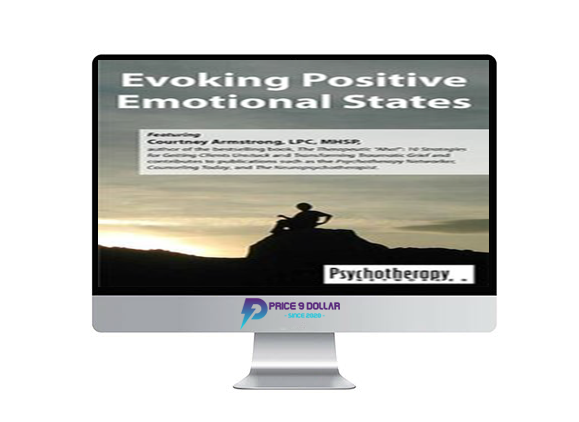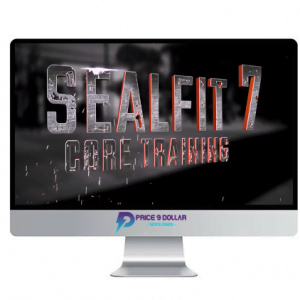[Special Offer] Courtney Armstrong – Evoking Positive Emotional States
$180.00 $75.00
Salepage: https://catalog.pesi.com/item/59997/
Courtney Armstrong – Evoking Positive Emotional States
Description
Courtney Armstrong – Evoking Positive Emotional States
Description
Research from brain science and positive psychology shows that activating positive emotional states is the fastest route to instilling hope, stimulating creativity, spurring motivation, and empowering our clients.
But how do you help clients access resourceful states when they’re feeling hopeless and helpless?
In this recording, you’ll discover how to gently lead discouraged clients into heartening experiences that enable them to reclaim inner states of peace, strength, joy, and vitality.
Moreover, you’ll have opportunities to evoke your own uplifting states through experiential activities.
Outline
Explain how to help clients access resourceful states when they’re feeling hopeless and helpless.
- State dependent learning and Frederickson’s broaden and build theory
- Self-compassion activities to reduce hopelessness and helplessness.
- Ego states and parts work activities to resolve inner conflicts.
Use imagery techniques to elicit desired emotions and engender positive feelings toward the self and the future.
- Why the emotional brain responds to imagery better than words.
- Breath-Symbol Imagery exercise to elicit desired emotional states.
- Desired Future Self activity to instill hope and motivation.
Articulate ideas, questions, and other interventions in ways that foster hope and boost motivation.
- How to read subtle nonverbal responses and follow the client’s energy.
- Attune, lift, and lead communication strategies that empathically motivate clients and effectively engage the emotional brain.
Determine how to gently lead discouraged clients into heartening experiences that enable them to reclaim inner states of peace, strength, joy, and vitality.
- Imagery for reframing identity.
- Shift emotional patterns with memory reconsolidation
Create music and movement interventions that lift depression, calm anxiety, and empower traumatized clients.
- How music and movement impact the brain and influence emotional states.
- Simple movement activities that increase energy, confidence, and vitality for depressed clients.
- Movement activities that calm anxiety and empower clients.
- How to use rhythm and music playlists to elicit desired emotional states.
Apply playful interventions that optimize learning and reinforce new behaviors in a clinical setting.
- How play optimizes learning and promotes new behaviors.
- Humorous role-play games to decrease anxiety and rumination.
Objectives
- Explain how to help clients access resourceful states when they’re feeling hopeless and helpless.
- Use imagery techniques to elicit desired emotions and engender positive feelings toward the self and the future.
- Articulate ideas, questions, and other interventions in ways that foster hope and boost motivation.
- Determine how to gently lead discouraged clients into heartening experiences that enable them to reclaim inner states of peace, strength, joy, and vitality.
- Create music and movement interventions that lift depression, calm anxiety, and empower traumatized clients.
Target Audience
- Psychologists
- Physicians
- Addiction Counselors
- Counselors
- Social Workers
- Marriage & Family Therapists
- Nurses
- Behavioral Health Professionals
Courtney Armstrong, LPC
Courtney Armstrong, LPC, MHSP, has over 20 years’ experience and is a Board Certified Fellow in Clinical Hypnotherapy who has trained thousands of mental health professionals nationally and internationally in creative, brain-based strategies for healing trauma.
She is a bestselling author of the book, The Therapeutic “Aha!”: 10 Strategies for Getting Clients Unstuck and Transforming Traumatic Grief and contributes to publications such as the Psychotherapy Networker, Counseling Today, and The Neuropsychotherapist. She has been featured as a trauma and grief expert on national television and radio programs and is the owner/director of Tamarisk: A Center for Mind-Body Therapy in the state of Tennessee.
Salepage: Courtney Armstrong – Evoking Positive Emotional States
Delivery Policy
When will I receive my course?
You will receive a link to download your course immediately or within 1 to 21 days. It depends on the product you buy, so please read the short description of the product carefully before making a purchase.
How is my course delivered?
We share courses through Google Drive, so once your order is complete, you'll receive an invitation to view the course in your email.
To avoid any delay in delivery, please provide a Google mail and enter your email address correctly in the Checkout Page.
In case you submit a wrong email address, please contact us to resend the course to the correct email.
How do I check status of my order?
Please log in to Price9Dollar account then go to Order Page. You will find all your orders includes number, date, status and total price.
If the status is Processing: Your course is being uploaded. Please be patient and wait for us to complete your order. If your order has multiple courses and one of them has not been updated with the download link, the status of the order is also Processing.
If the status is Completed: Your course is ready for immediate download. Click "VIEW" to view details and download the course.
Where can I find my course?
Once your order is complete, a link to download the course will automatically be sent to your email.
You can also get the download link by logging into your Price9Dollar account then going to Downloads Page.
 INTERNATIONAL LABOR DAY SALE
INTERNATIONAL LABOR DAY SALE ![[Special Offer] John Forde – Leads Bundle 1 082 1](https://www.price9dollar.net/wp-content/uploads/2021/04/082-1-100x100.png)
![Alexia Rothman – Internal Family Systems Therapy [Special Offer] 2 Alexia Rothman – Internal Family Systems Therapy](https://www.price9dollar.net/wp-content/uploads/2021/10/v4-100x100.png)

![[Special Offer] Courtney Armstrong – Evoking Positive Emotional States 3](https://i.imgur.com/xMlTEu6.gif)







